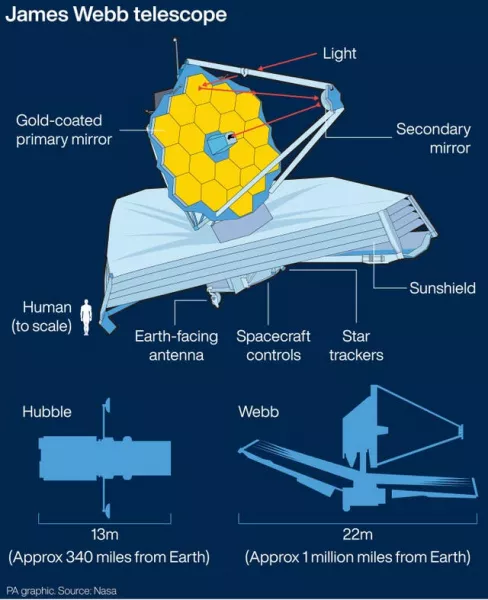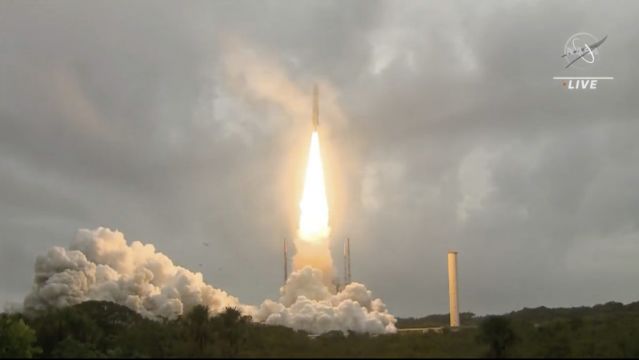The world’s most powerful telescope has been launched into space on Christmas Day.
The James Webb Space Telescope (JWST) took off from Kourou spaceport in French Guiana at 12.20pm on an Ariane 5 rocket.
We have LIFTOFF of the @NASAWebb Space Telescope!
At 7:20am ET (12:20 UTC), the beginning of a new, exciting decade of science climbed to the sky. Webb’s mission to #UnfoldTheUniverse will change our understanding of space as we know it. pic.twitter.com/Al8Wi5c0K6— NASA (@NASA) December 25, 2021
Designed to answer unsolved questions about the universe, it will look further back in time than ever before to 400 million years after the Big Bang, the UK Space Agency says.
It was originally meant to leave on Christmas Eve, but a forecast of high-level winds at the spaceport forced it to be postponed.
Controllers were given a 30-minute window to launch the rocket beginning at 12.20pm, and successfully hit the beginning of the time slot.

As the rocket launched, Nasa spokesman Rob Navias said: “Lift-off, from a tropical rainforest to the edge of time itself, James Webb begins a voyage back to the birth of the universe.”
The launch was streamed live by Nasa, with commentary in various languages.
Preparation for the project began in 1996, and construction was completed in 2016.
The launch was initially planned for earlier this month, but several setbacks including a communications issue and an incident requiring an extra round of checks on the telescope pushed the date back.

The JWST’s partners are the European Space Agency, Nasa and the Canadian Space Agency.
Scientists from Durham University are among a team of 50 researchers from around the world taking part in the Cosmos-Webb programme, which will use JWST to survey a patch of sky near the constellation Sextans.
The cosmologists will map the dark matter around galaxies with the aim of unlocking the secrets of the mysterious substance that makes up the majority of matter in the universe.







